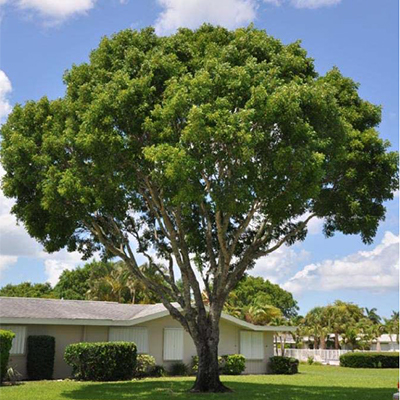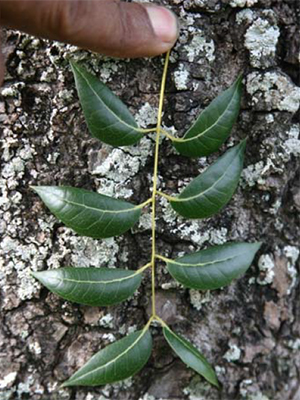Mahogany
 A mature mahogany tree in Fort Myers Florida. Photo: Stephen H. Brown, UF/IFAS. All rights reserved.
A mature mahogany tree in Fort Myers Florida. Photo: Stephen H. Brown, UF/IFAS. All rights reserved.
Mahogany is a tropical tree, well-known for its aromatic hardwood used in furniture making. Gardeners in much of South Florida—zones 10a to 11—are lucky enough to be able to grow this tree.
Mahogany (Swietenia mahagoni) casts a light, dappled shade on the ground below, making it a great shade tree for landscapes with enough room for it to thrive. Mahogany trees that are planted along streets or in medians, or even in private landscapes, form a beautiful overhead canopy that can be enjoyed by all. It's briefly deciduous, dropping its leaves in spring.
Native Range
Mahogany is native to southernmost Dade and Monroe counties and is currently listed as a state threatened species due to logging. However, it is readily available for purchase at many native nurseries in South Florida, and is commonly planted as a street and shade tree. The species is also native to the Bahamas and the western Caribbean, including Cuba, Hispaniola, and Jamaica. It was introduced to Puerto Rico and the Virgin Islands more than 250 years ago.
Characteristics
One of South Florida’s most popular landscape and street trees, mahogany is fast-growing and large, generally reaching a height between 40 and 60 feet with a canopy that spreads about 50 feet wide. While it has been known to reach 75 feet tall, this is far less common. The crown of these trees is rounded and symmetrical with pinnate leaves that are between 6 and 9 inches long. The actual leaf is made up of 4 or 5 pairs of "leaflets" that the common individual might mistake for a leaf. They're shiny, green, and lance-shaped. New leaves usually appear in April and May after old leaves are quickly shed a week or two before.

Single leaf with eight leaflets against the bark of a mature mahogany tree. Photo: Stephen H. Brown, UF/IFAS. All rights reserved.
The green flowers on these trees are not showy and emerge simultaneously with the new leaves. The fruits, known as capsules, slowly develop during summer and fall, maturing in winter. The silvery hard capsules are oval and are 3 to 5 inches long. Mature capsules split open while still on the tree, releasing winged seeds.
The dense, strong wood of mahogany trees is beloved for its wood working qualities, but that same wood strength helps this tree resist wind damage — when properly trained. Additionally, the loose canopy of these trees allows enough sunlight to reach the ground for grass to grow. A shade tree for a hurricane prone area that is wind resistant and supports vegetative undergrowth; what more could you ask for?
Planting and Care
Plant mahogany in full sun with plenty of room to spread. They are highly salt and drought tolerant and do well in coastal areas. Mahoganies grow to become large trees with aggressive roots. Generally, plant them no closer than 20 feet from permanent structures and 5 to 6 feet from sidewalks and curbs. Additionally, leaf fall in the spring and showy capsules, which do not attract wildlife, can be a litter problem in the winter as they break apart and fall from the tree.
If left unpruned, trees will develop many large upright branches growing close together that are subject to splitting apart during storms. Be sure to train young trees to have a central leader that will greatly improve wind resistance.
If you have the right location, mahogany is a wonderful shade tree for roadways, parks, and yards.
UF/IFAS Publications
- Mahogany, Swietenia mahagoni (PDF)
- Trees: South Florida and the Keys, available at the University Press of Florida website.

